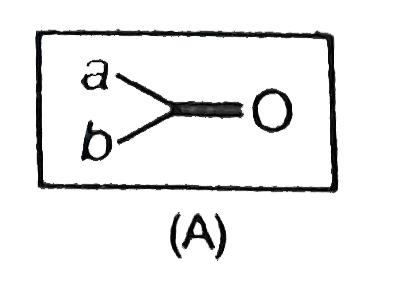Correct stament for nucleophlic addition of sodium bisulphate on carbonyl compounds is :
This addition is highly sensitive to crowding steric crowding increase, then addition decreases, so aldehyde more reactive than ketone in this reaction
This reaction used for separation of aldehyde and ketone from a mixture containing some other compounds becouse addition product is a crystaline salt
It is reversible reaction, so bisulphite addition product regenerate corresponding carbonyl compound on treatment with acid or base
All of these
The correct Answer is:D
To solve the question regarding the correct statement for the nucleophilic addition of sodium bisulfate on carbonyl compounds, we need to understand the nature of the reaction and the role of sodium bisulfate.
1. Understanding Nucleophilic Addition:
- Nucleophilic addition is a reaction where a nucleophile attacks an electrophilic carbon atom in a carbonyl compound (like aldehydes and ketones).
2. Identifying Sodium Bisulfate:
- Sodium bisulfate (NaHSO₄) can act as a nucleophile due to the bisulfate ion (HSO₄⁻), which can donate a pair of electrons.
3. Reaction with Carbonyl Compounds:
- When sodium bisulfate reacts with a carbonyl compound, the bisulfate ion attacks the carbonyl carbon, leading to the formation of a tetrahedral intermediate.
4. Formation of Addition Product:
- The tetrahedral intermediate can then undergo protonation or further reaction to yield a stable addition product. This product often has a hydroxyl group and a sulfonate group.
5. Correct Statement:
- The correct statement for the nucleophilic addition of sodium bisulfate on carbonyl compounds is that it results in the formation of a bisulfite addition product, which can be isolated as a white crystalline solid.
Final Answer:
The correct statement for the nucleophilic addition of sodium bisulfate on carbonyl compounds is that it leads to the formation of a bisulfite addition product.
- Nucleophilic addition is a reaction where a nucleophile attacks an electrophilic carbon atom in a carbonyl compound (like aldehydes and ketones).
- Sodium bisulfate (NaHSO₄) can act as a nucleophile due to the bisulfate ion (HSO₄⁻), which can donate a pair of electrons.
- When sodium bisulfate reacts with a carbonyl compound, the bisulfate ion attacks the carbonyl carbon, leading to the formation of a tetrahedral intermediate.
- The tetrahedral intermediate can then undergo protonation or further reaction to yield a stable addition product. This product often has a hydroxyl group and a sulfonate group.
- The correct statement for the nucleophilic addition of sodium bisulfate on carbonyl compounds is that it results in the formation of a bisulfite addition product, which can be isolated as a white crystalline solid.
The correct statement for the nucleophilic addition of sodium bisulfate on carbonyl compounds is that it leads to the formation of a bisulfite addition product.
Topper's Solved these Questions
Similar Questions
Knowledge Check
The addition of HCN to carbonyl compounds is an example of
Anucleophilic additionBelectrophilic additionCfree radical additionDelimination addition.Which of the following carbonyl compounds is most polar ?
AC2H5−O||C−C2H5BCH3−O||C−CH3CCH3−O||C−HDH−O||C−H
The correct order of reactivity for the nucleophilic addition reaction of the following carbonyl compounds with ethyl magnesium iodide is :

View SolutionWhich of the following is the correct represetation for intermediate of nucleophilic addition reaction to the given carbonyl compound (A) ?

View SolutionThe nature of 0.1 M solution of sodium bisulphate is
View SolutionWhich of the following statements are correct about the bisulphite addition product of a carbonyl compound ?
View SolutionAlkenes
 and carbonyl compounds
and carbonyl compounds  both contain a π bond but alkenes show electrophilic addition reactions whereas carbonyl compounds show nucleophilic addition reactions. Explain.
both contain a π bond but alkenes show electrophilic addition reactions whereas carbonyl compounds show nucleophilic addition reactions. Explain.
View SolutionThe correct order of reactivity for the addition reaction of the following carbonyl compounds with ethyl magnesium iodide is

View Solution
